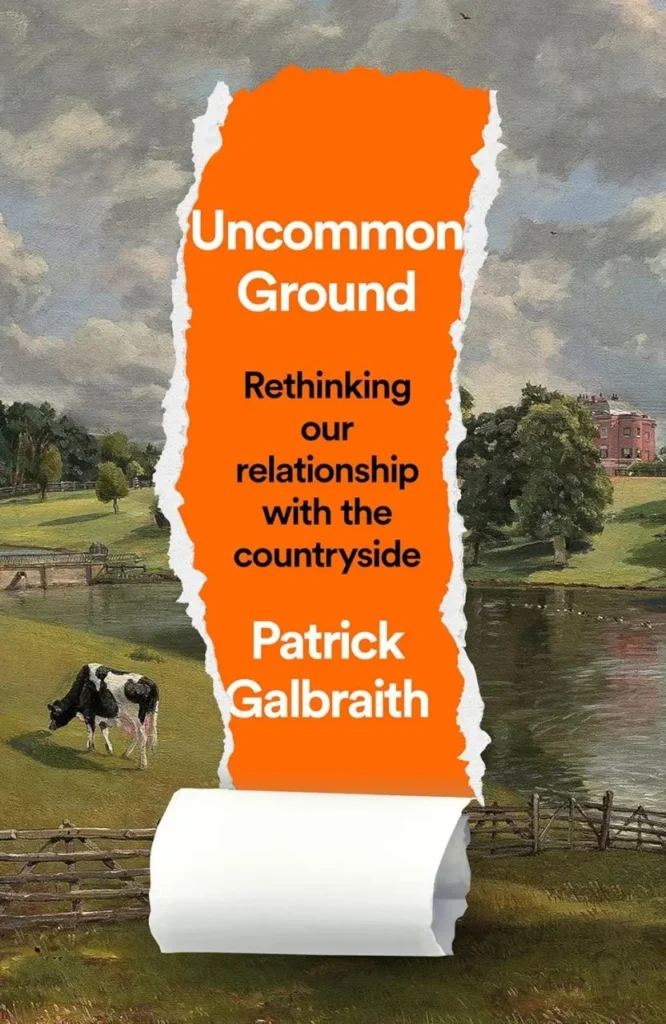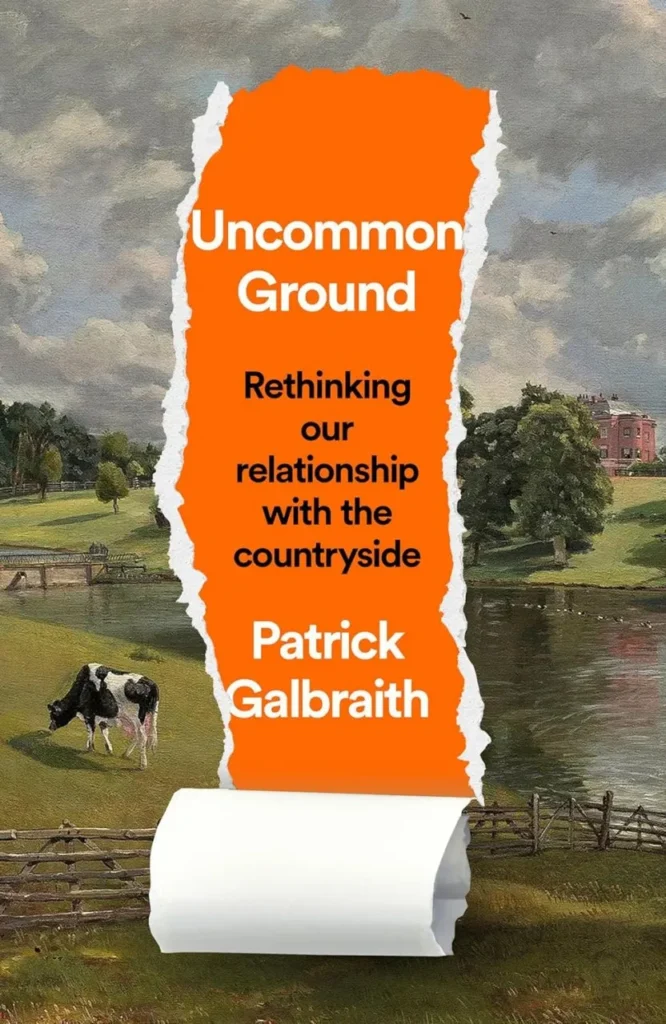Uncommon Ground
Patrick Galbraith

Uncommon Ground by Patrick Galbraith is a punchy and well-written ‘establishment’ take on the enduring discourse surrounding the public’s right to access the countryside in Britain. Approving reviews have been published in The Telegraph and The Guardian. But, despite the author’s assertions of his impartiality, (‘my evenhandedness is something almost every review… has picked up’) it has managed to cause a stir among those deeply invested in the access debate. The Right to Roam movement, who are currently leading the charge to increase public access, have published a critique and rebuttal (‘‘falsity, misrepresentation and breaches of privacy and trust’). And, within his book, Galbraith alleges (see p. 88) that Wild Service (authored by key Right to Roamers) is ‘potentially libellous’. This is the backdrop to a book that holds the ostensibly simple objective of providing a balanced perspective on the issue of the public’s access to land.
Across ten chapters, the author describes encounters with a decidedly diverse cross section of British society. These interactions form the basis of Galbraith’s central thesis: Britain’s problem isn’t about land access, or the lack thereof, it is about a lack of engagement with land and a lack of education. Much of the text is concerned with establishing what kind of engagement is the right kind and whether it is likely to instil an ethic of responsible care for nature. The author is a former editor of the Shooting Times so unsurprisingly it contains lots of love letters to wildfowling and other country pursuits. It is entirely subjective as to whether these activities offer more valuable ‘engagement’ than those which Galbraith scoffs at, which include kayaking and wild swimming. At the same time, Galbraith rightly notes “we are, many of us, chronically disconnected from nature, which is an immense and destructive problem”. A greater focus on the ways in which we engage with nature and wildlife is essential if we are to bridge this disconnect and improve the outlook for wildlife and ourselves.
Galbraith leaves the strong impression that he is primarily concerned with reinforcing the grip that the establishment (particularly landowners) hold over Britain’s countryside, signalling support for conservation efforts only when they can sit comfortably within our pre-existing structure of land ownership. Because of these apparent biases it would be easy to dismiss the book as elitist pandering or a well written piece of damage control responsive to the potentially galvanising land reform movement, however, the book raises some important concerns about unregulated human contact with nature. The author convincingly argues that access to nature does not automatically translate to care for nature. Evoking our relationship with the coastline, where access is usually granted permissively, Galbraith describes the undeniably disastrous impact of footfall, litter and pet dogs on some groups of coastal wildlife such as beach-nesting birds. Similarly, Galbraith argues that Scotland where a (sort of) right to roam operates hasn’t seen a nationwide care arise for its endangered species and threatened habitats, and public access has worsened the outlook for dwindling populations of Capercaillie and Black Grouse. His broad concerns about increased public access are often valid and his plea for a national emphasis on ‘access education’ is salutary and sensible. At the same time, Galbraith fails to recognise the positives in the Right to Roam approach. The campaign does not support a universal right of access and agrees that sites should be restricted where appropriate to protect endangered species, and has provided a framework of conservation-based restriction. He could have highlighted these points, but does not.
More broadly, Galbraith breezes over a lot of the real and important reasons why people call for increased access to land in Britain. The reader is given the impression that those who campaign for access do so solely to create more opportunities for us to drop litter and trample ground-nesting birds. The reality is more nuanced. As Guy Shrubsole argues in Lie of the Land, ‘those who dare to trespass into wider countryside often uncover evidence of wildlife crimes, habitat destruction and river pollution’. Galbraith dismisses the idea that citizens should be whistleblowers for nature, arguing that ‘spying’ might further fracture relationships between landowners and conservationists. Surely well-intentioned landowners, who are by and large not ecologists, would welcome the presence of responsible citizens who can identify invasive species or harmful pollutants or notify them of how their mismanagement is inadvertently causing environmental destruction. The book’s unbroken focus upon the comparatively minimal damage caused by human disturbance, as opposed to that caused by the mismanagement of landowners becomes increasingly baffling. It is difficult to reconcile the author’s occasionally heartfelt arguments for conservation with his steadfast refusal to engage with calls to regulate a structure of land ownership which allows landowners to damage habitats and cause species loss in some of Britain’s few remaining natural strongholds.
Uncommon Ground concludes with some suggestions for how engagement with nature could be improved. Galbraith supports Mary Colwell’s Natural History GCSE, argues that landowners should provide two educational visits to their land each year if they receive conservation payments (an outrageously meagre condition) and calls for a governmental focus on creating conservation career opportunities for young people. There are some excellent ideas among these suggestions, but none represent the ‘radical policies’ that his conclusive chapter promises.
Ultimately, the ‘even-handedness’ of this text is more accurately its political commitment to maintaining Britain’s current structure of land ownership. It contains some valuable ideas but its usefulness as a driver for conservation action is entirely limited by its conservatism. While Galbraith does acknowledge “we… have a suite of landowners… who are totally useless”, the conclusive ideas of Uncommon Ground are not enough to hold these landowners to account or to meaningfully alter Britain’s trajectory of biodiversity loss. Anyone interested in the access debate should read this but always alongside other books on the subject. Oh, and readers should certainly see Right to Roam’s response… for balance.
Reviewed by Sam Hackney
British Wildlife Editorial Team

